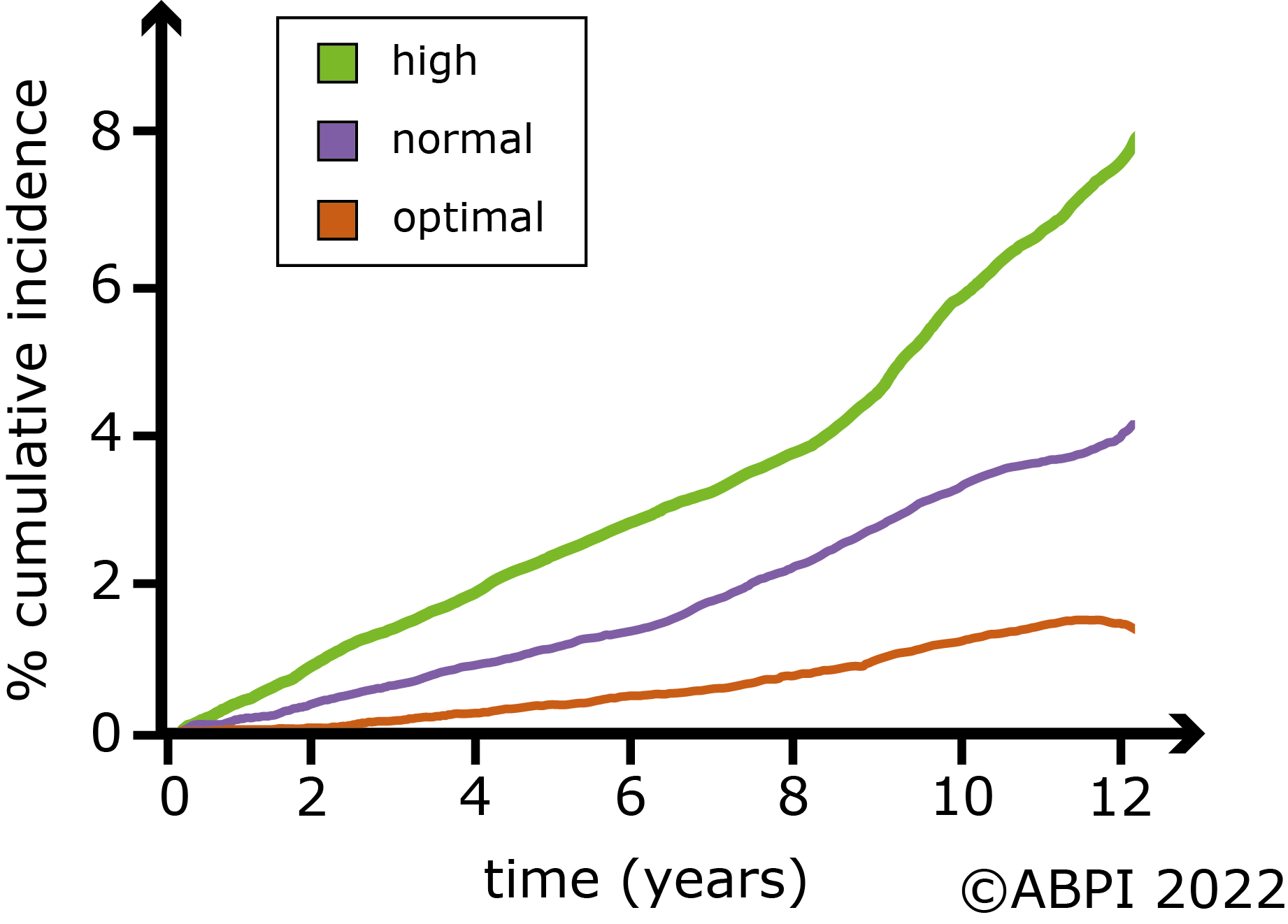This topic takes on average 55 minutes to read.
There are a number of interactive features in this resource:
 Biology
Biology
 Human biology
Human biology
 Physical education
Physical education
 Science
Science
Your heart is a muscular pump which generates the blood pressure needed to keep the blood flowing. This can be measured using a piece of equipment called a sphygmomanometer or digital blood pressure meters which take the readings automatically. These digital monitors can easily be used at home.
|
Measuring blood pressure using a sphygmomanometer |
Using a digital blood pressure |
Using a digital blood pressure |
Doctors always give blood pressure as two readings. A healthy person's normal pressure might be "120 over 80 mm of mercury (mmHg)".
The first number is the higher pressure caused as the left ventricle contracts to push blood out of the heart. Doctors call this the systolic pressure. The lower value is the pressure in the arteries during the time that the heart is filling with blood. This is the diastolic pressure.
[The standard unit of pressure is the pascal (Pa) and blood pressure can be measured in kilopascals (kPa). A pressure reading of 120 over 80 mmHg (120/80 mmHg) is equivalent to 16 over 10 kPa (16/10kPa); however most doctors and patients still use the traditional measurements.]
When you are relaxed, your resting blood pressure is relatively low. When you are active your blood pressure rises to supply blood faster to the hard-working muscles. This is caused by the body producing adrenaline, the hormone which prepares your body for 'fight or flight'.
A person has high blood pressure, called hypertension, if their resting blood pressure is higher than about 140/90mmHg. In the United Kingdom over 10million people have hypertension.
It can be difficult to get an accurate diagnosis of high blood pressure because a lot of people feel anxious when a doctor or nurse takes their blood pressure - and that puts their blood pressure up! This is sometimes called 'white coat hypertension'. Ideally someone will wear a special 24 hour blood pressure monitor to show that their resting blood pressure really is higher than it should be, before they are given any medication designed to lower their blood pressure.
Hypertension is a health problem because it puts great strain on the heart, which can lead to serious heart disease. It can also cause tiny blood vessels to break. If this happens in the brain it leads to a stroke. A blood clot forms and deprives a part of the brain of blood and therefore of oxygen. This damages nerve cells and can lead to paralysis or even death.
Hypertension can be genetic but it is often caused or made worse by lifestyle choices. Being overweight, smoking and not taking exercise all increase the risk of hypertension.

Graph showing the link between
high blood pressure and heart disease

Graph showing the link between
high blood pressure and strokes
Often it is possible to lower your blood pressure by taking simple measures such as losing weight, taking more exercise and eating a balanced diet containing lots of fruit and vegetables, low levels of saturated fat and salt and limited amounts of alcohol.
If lifestyle measures do not help lower the blood pressure, medicines called beta-blockers can be given to slow the heart rate and reduce the force of contractions. This helps to reduce the blood pressure. Medicines known as ACE-inhibitors can also help by opening up the arteries and veins to allow the blood to flow more easily.
Low blood pressure can be a sign of heart failure or may be due to a dramatic loss of blood due to severe bleeding after something like a road accident. If it is not treated quickly, oxygen is not delivered to the brain and this is fatal. At the scene of a car accident, fluids may be put in to the blood stream, using an intravenous drip, to help maintain the blood pressure.